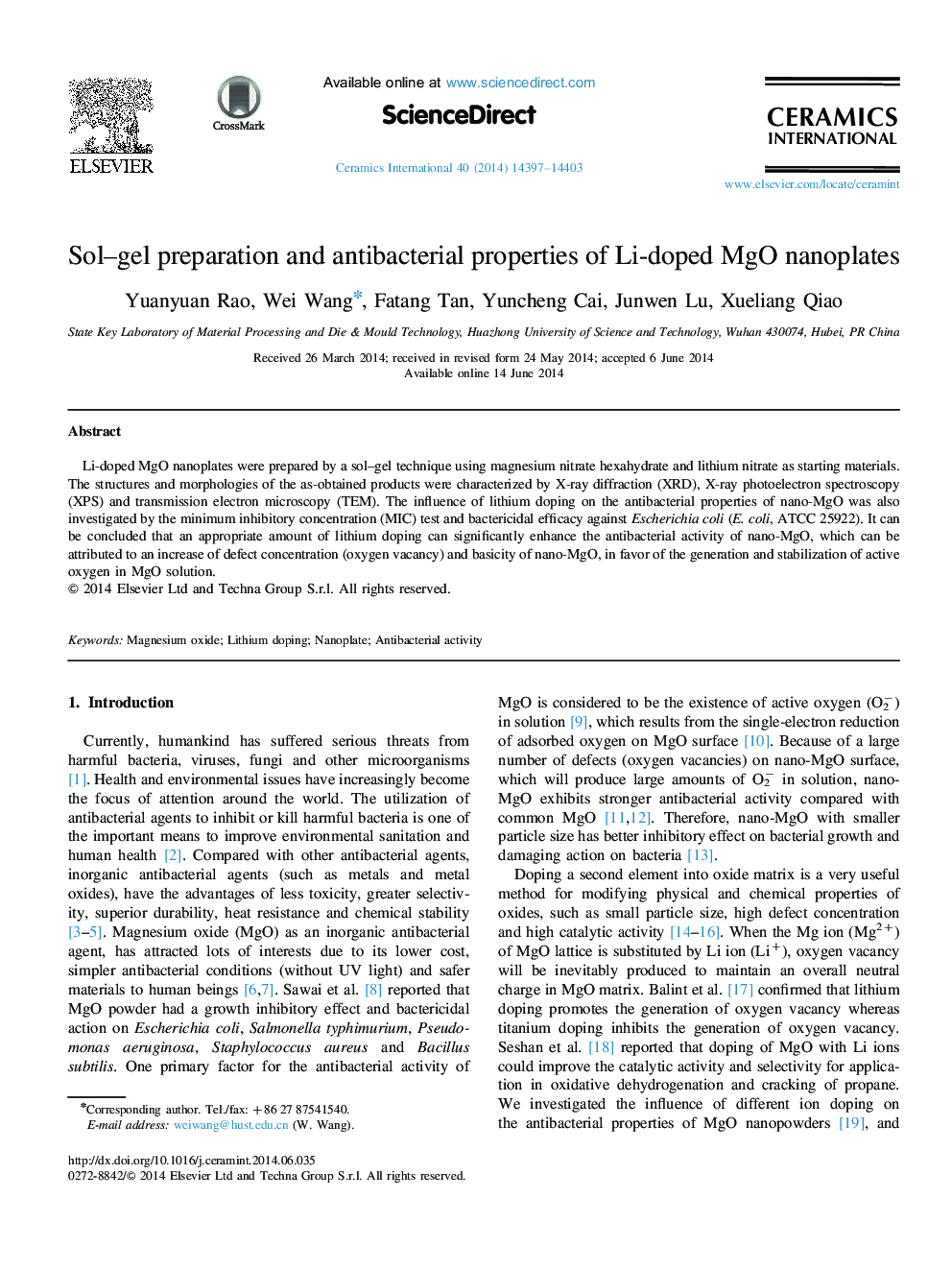| Article ID | Journal | Published Year | Pages | File Type |
|---|---|---|---|---|
| 10625061 | Ceramics International | 2014 | 7 Pages |
Abstract
Li-doped MgO nanoplates were prepared by a sol-gel technique using magnesium nitrate hexahydrate and lithium nitrate as starting materials. The structures and morphologies of the as-obtained products were characterized by X-ray diffraction (XRD), X-ray photoelectron spectroscopy (XPS) and transmission electron microscopy (TEM). The influence of lithium doping on the antibacterial properties of nano-MgO was also investigated by the minimum inhibitory concentration (MIC) test and bactericidal efficacy against Escherichia coli (E. coli, ATCC 25922). It can be concluded that an appropriate amount of lithium doping can significantly enhance the antibacterial activity of nano-MgO, which can be attributed to an increase of defect concentration (oxygen vacancy) and basicity of nano-MgO, in favor of the generation and stabilization of active oxygen in MgO solution.
Related Topics
Physical Sciences and Engineering
Materials Science
Ceramics and Composites
Authors
Yuanyuan Rao, Wei Wang, Fatang Tan, Yuncheng Cai, Junwen Lu, Xueliang Qiao,
